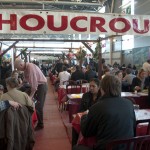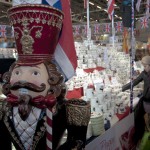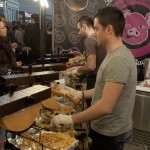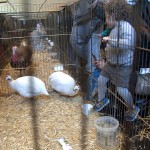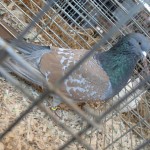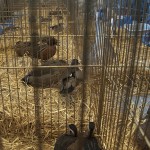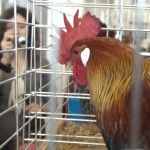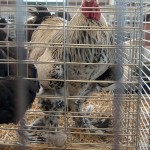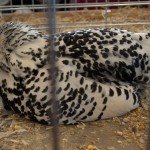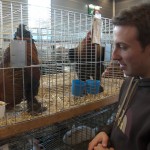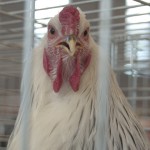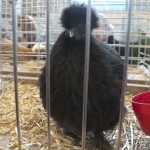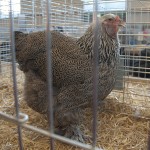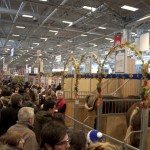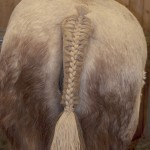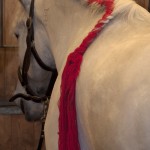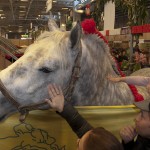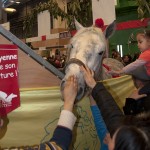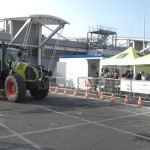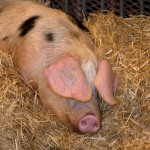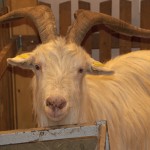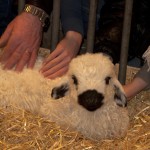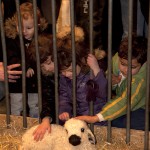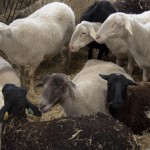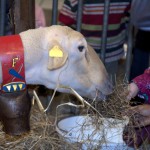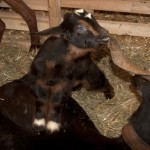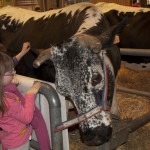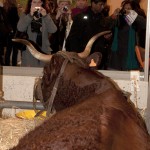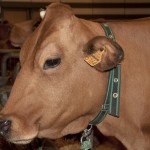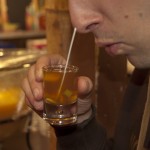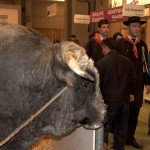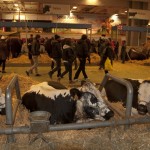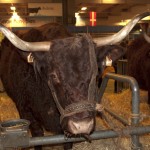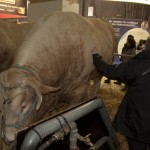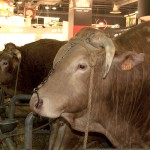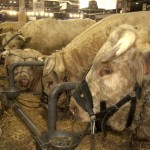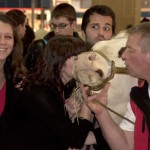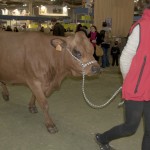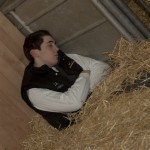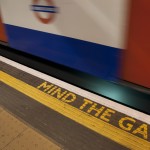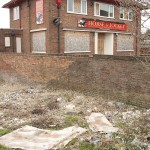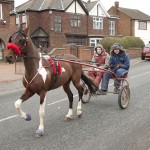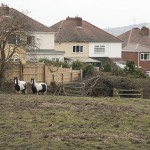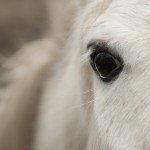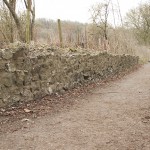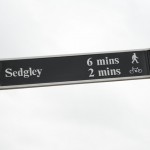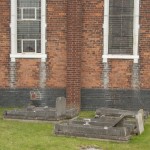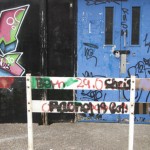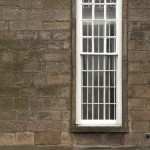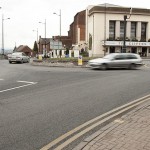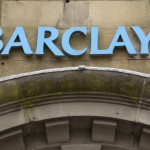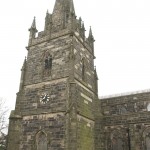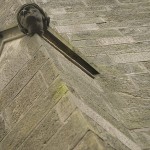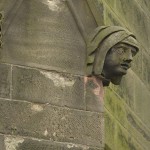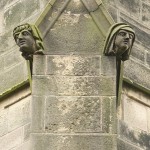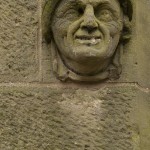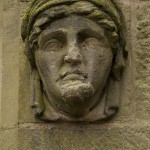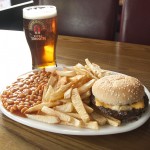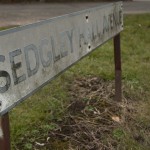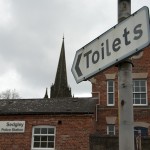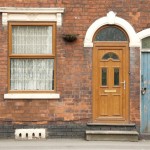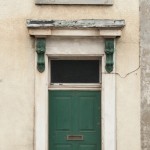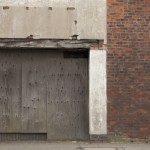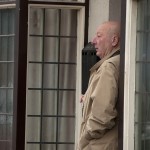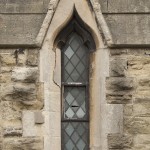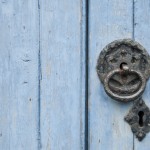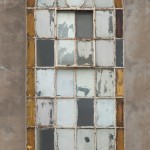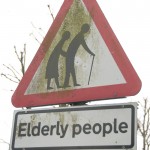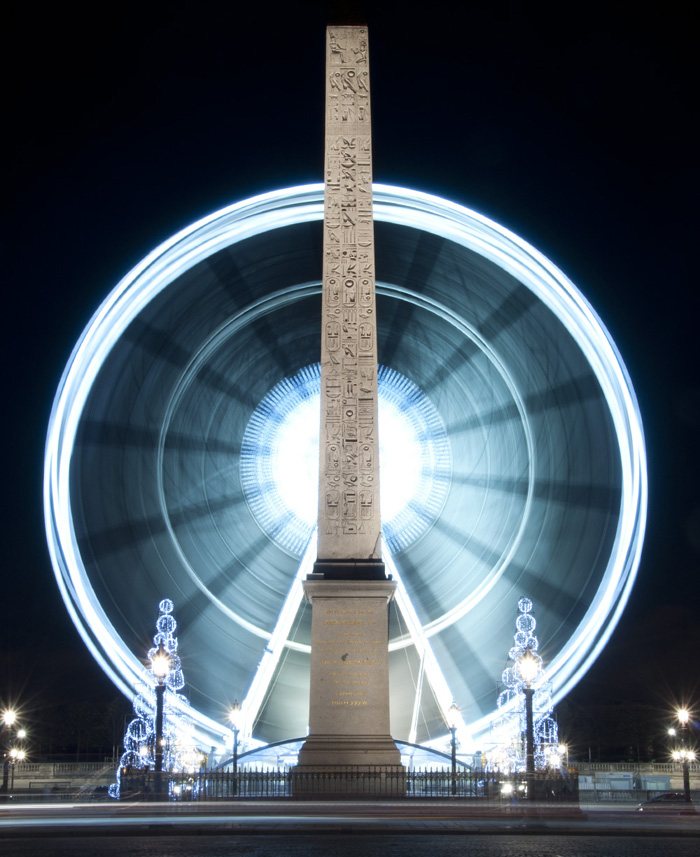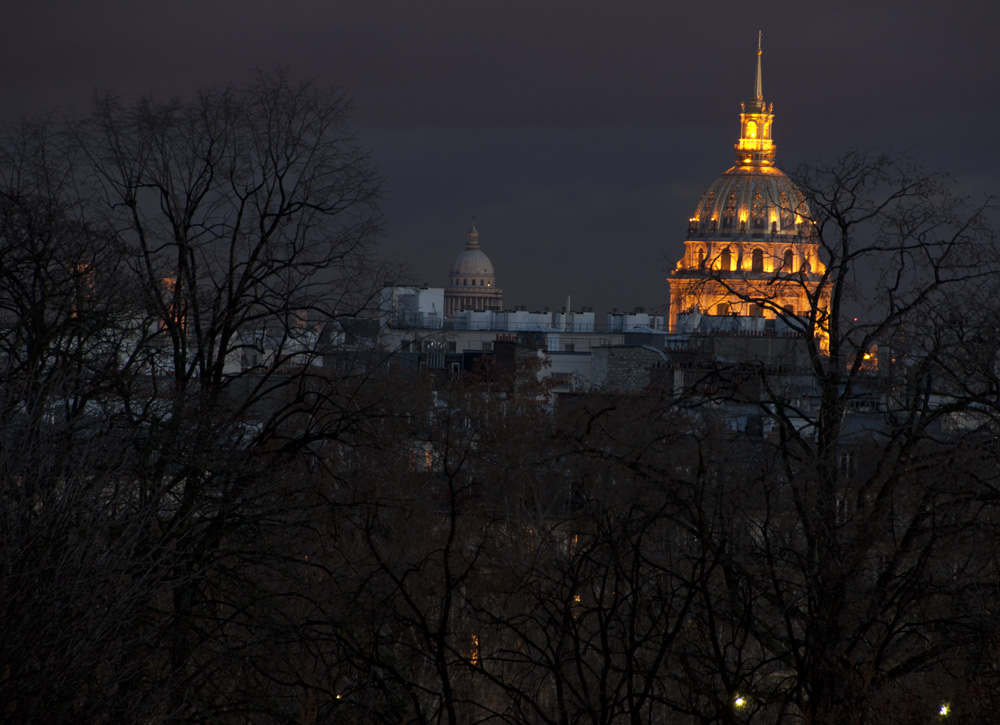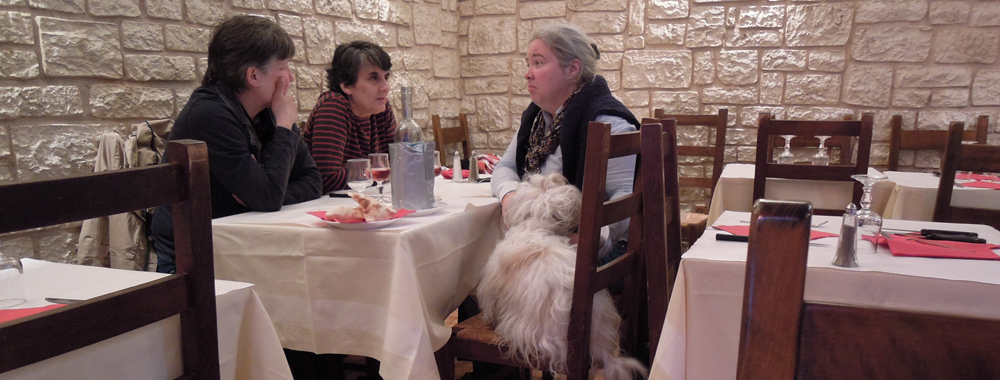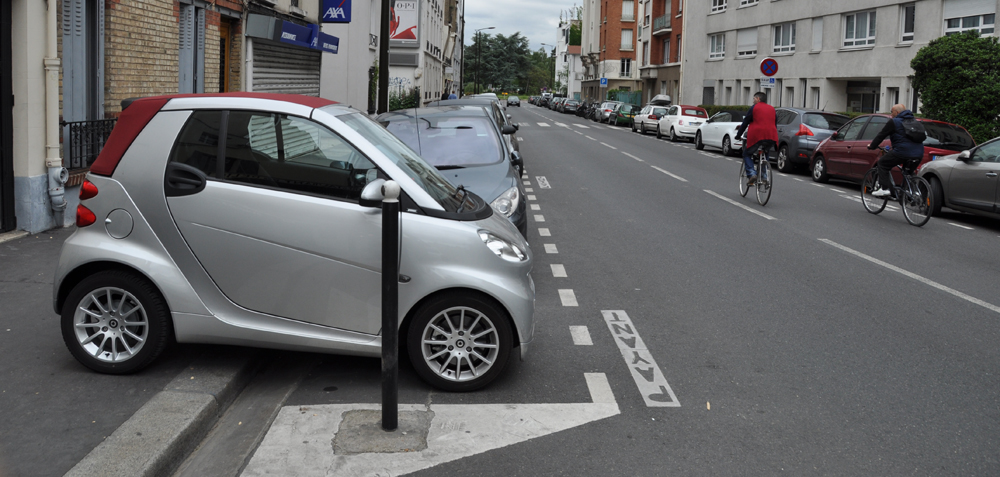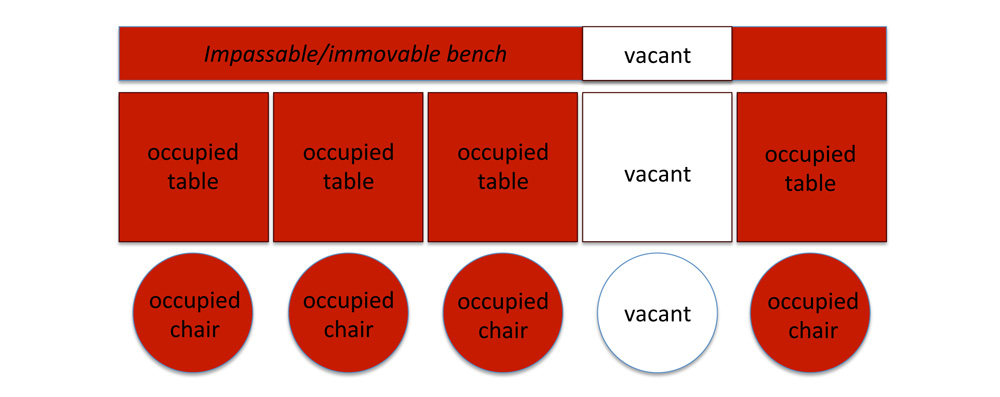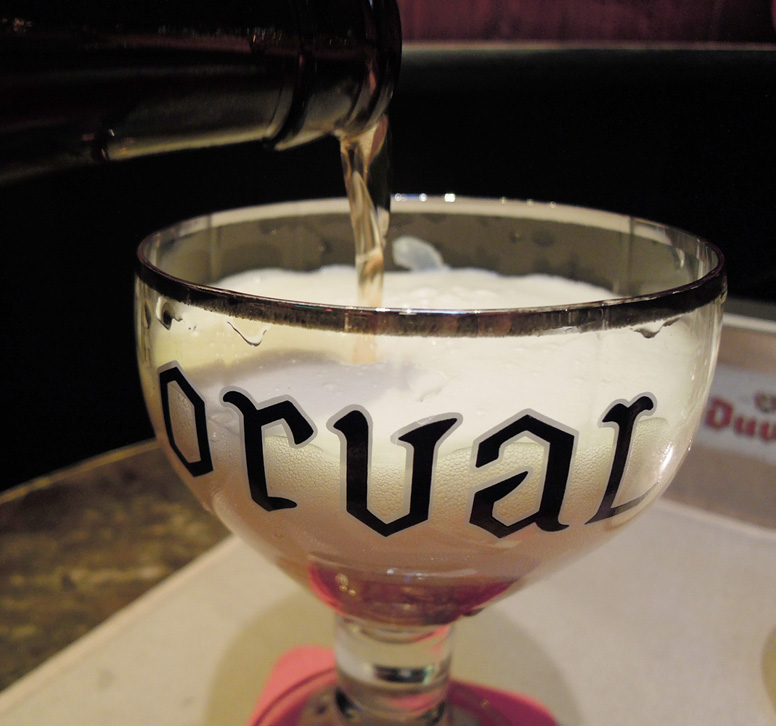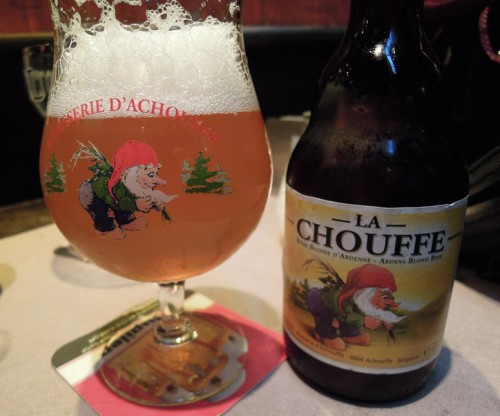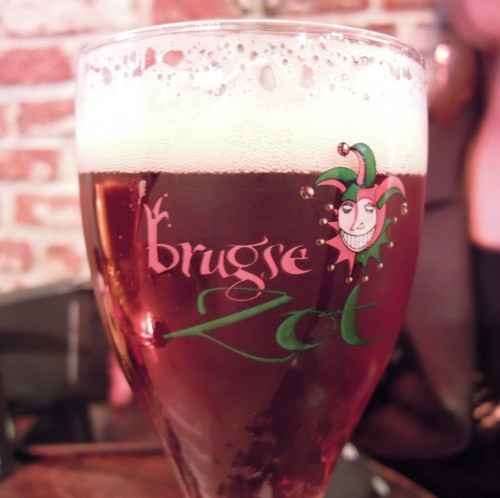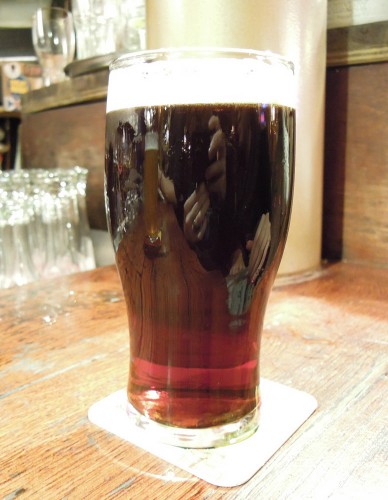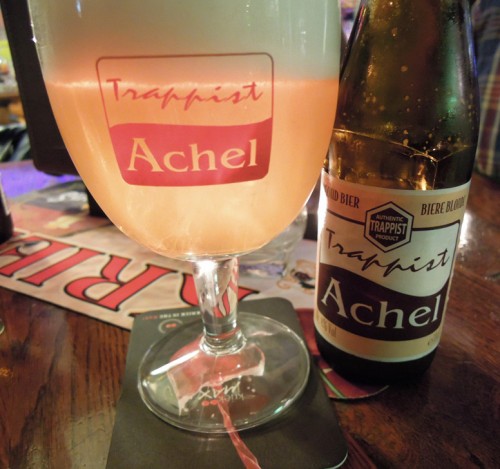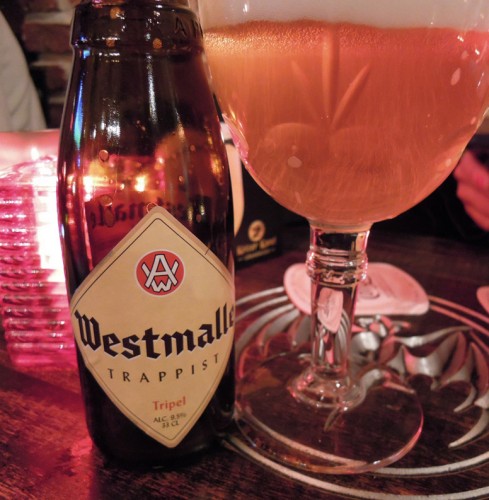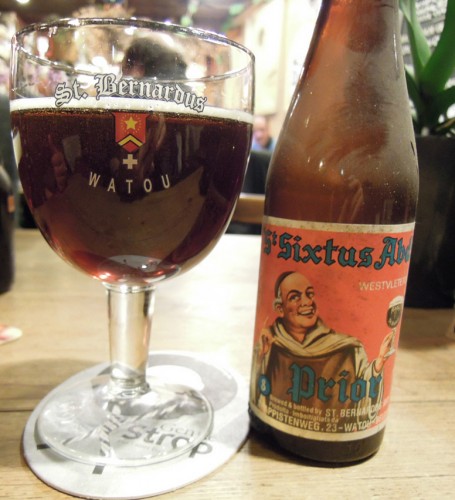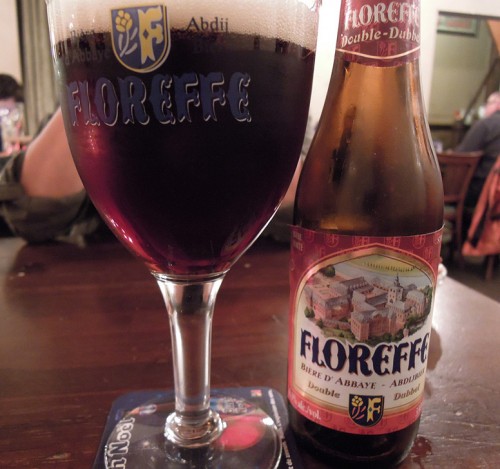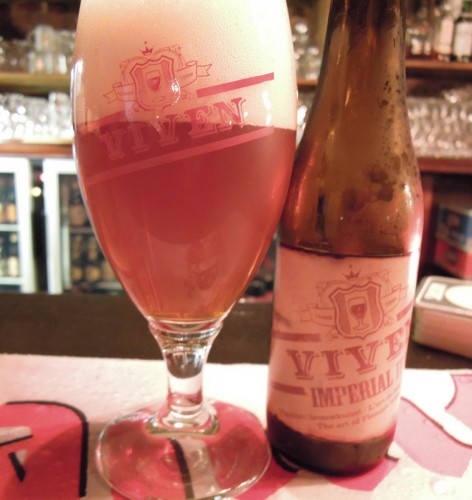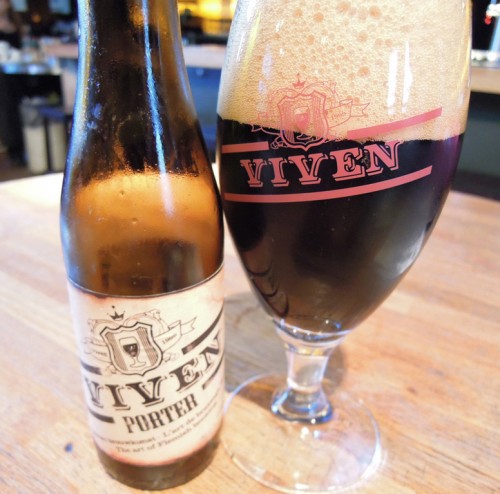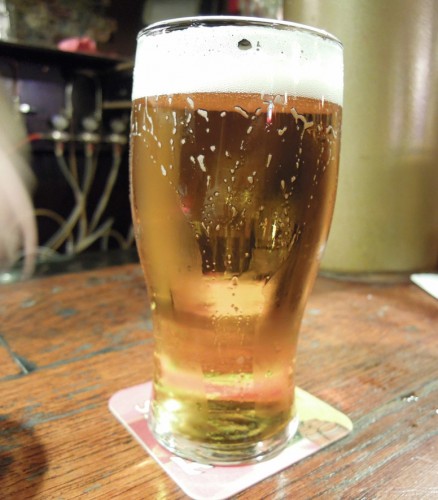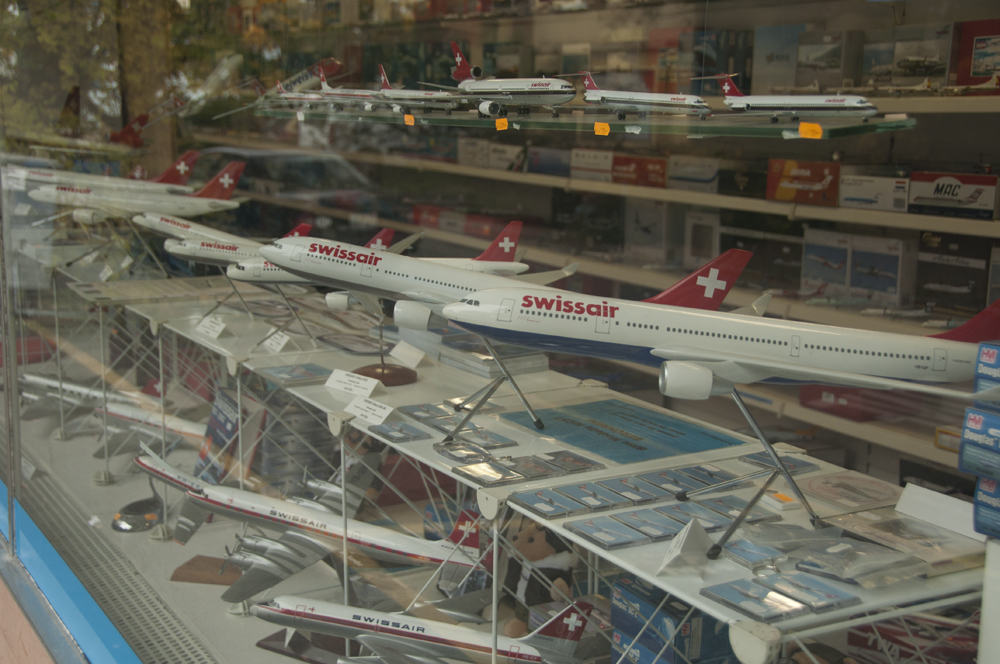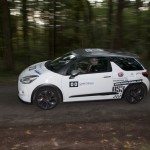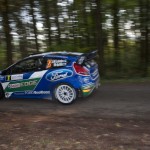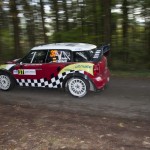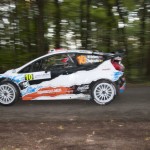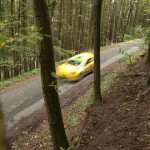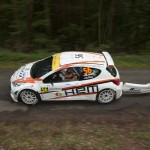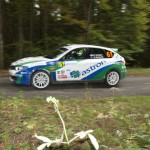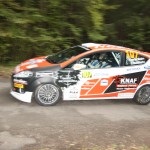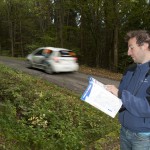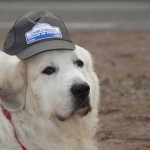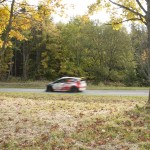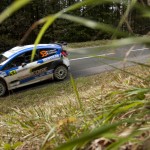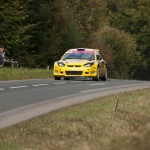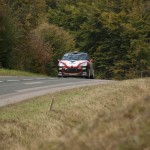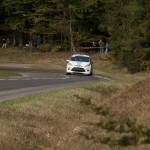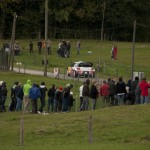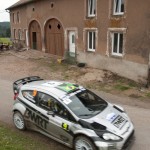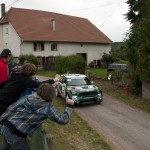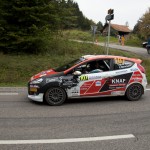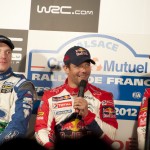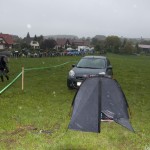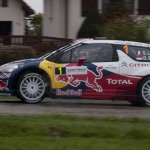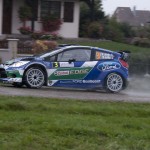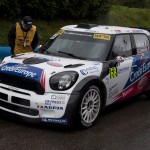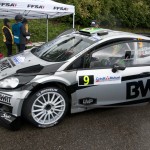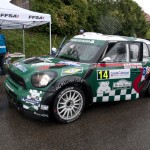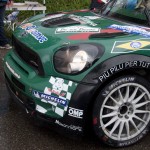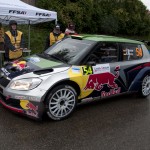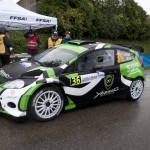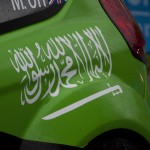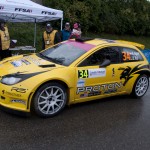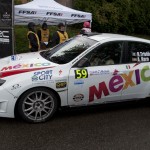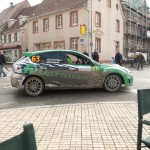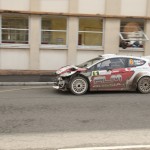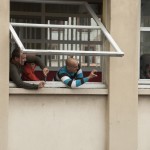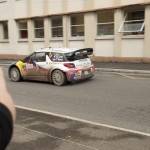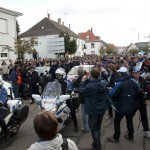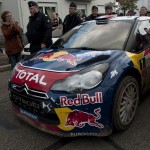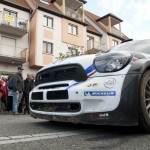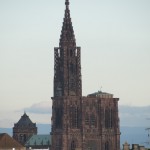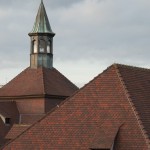Sedgley Goes to Sedgley
Paris by Night: Cathedrale Notre Dame
What do you think of when I say “Notre Dame.”
OK, now stop chanting “Rudy” and imagine that I said it in a more dignified air: “NOOOH-truh DAAAAAAHM.”
Yup, that one.
After several months in PEH-reee, Kristi and I had walked past this stone postcard model numerous times, pausing briefly to take snapshots. This church—arguably the most iconic in Europe—was worth more. One October afternoon, I dusted off my tripod and descended into the tourist hive to take some shots at sunset.
As one might expect, this building is really, really old. The first stone was laid in 1146 under the direction of Maurice de Sully, Bishop of Paris, on a site that had hosted various religious buildings for a millennia. Amazingly, many of those who built the church did so without payment (and probably working more than 35 hours a week) nor the hope they’d ever live to see it completed. Or that their children would; or their children’s children. Notre Dame was completed eight generations later in the 13th century.
It is widely considered to be one of the best examples of the French Gothic style of architecture. The flying buttresses—arches that follow the roofline out to large external pillars—distributed the weight of the roof out away from the building. This architectural innovation allowed for taller, thinner walls and deflected the overwhelming pressure away from the stained glass windows (thereby sparing churchgoers from the resulting technicolor shrapnel).
By the mid-19th century, it had fallen victim to centuries of neglect and was slated for demolition. It was ultimately saved by a spinally-impaired occupant penned by Victor Hugo who reinvigorated interest in both the church and medieval architecture.
Homes and other urban clutter in front of the church were cleared in the late 19th century to create Place du Parvis Notre Dame. Aside from improved sight lines to the church facade, this square affords visitors an opportunity to stand at Kilometre Zero, the point from which all distances to Paris are measured throughout the country.
The first two photographs are from Pont de l’Archevêché to the east, showing what a 90° turn of a polarized filter can do for the clouds in the sky. The sunset shots are from across the river, further east over Pont Saint-Louis. The night shots are from Place du Parvis Notre Dame on the west side of the church.


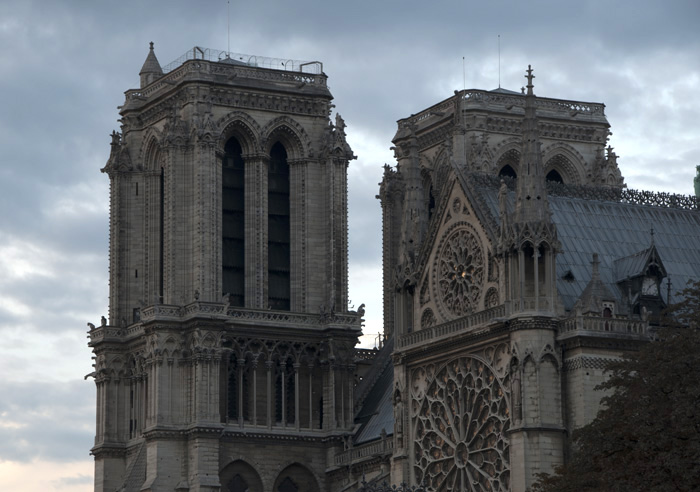
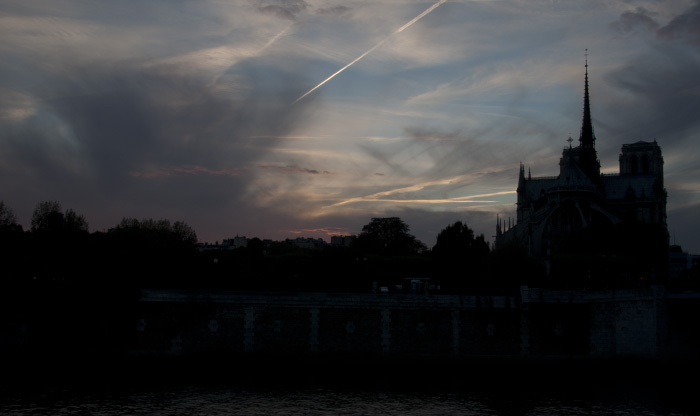
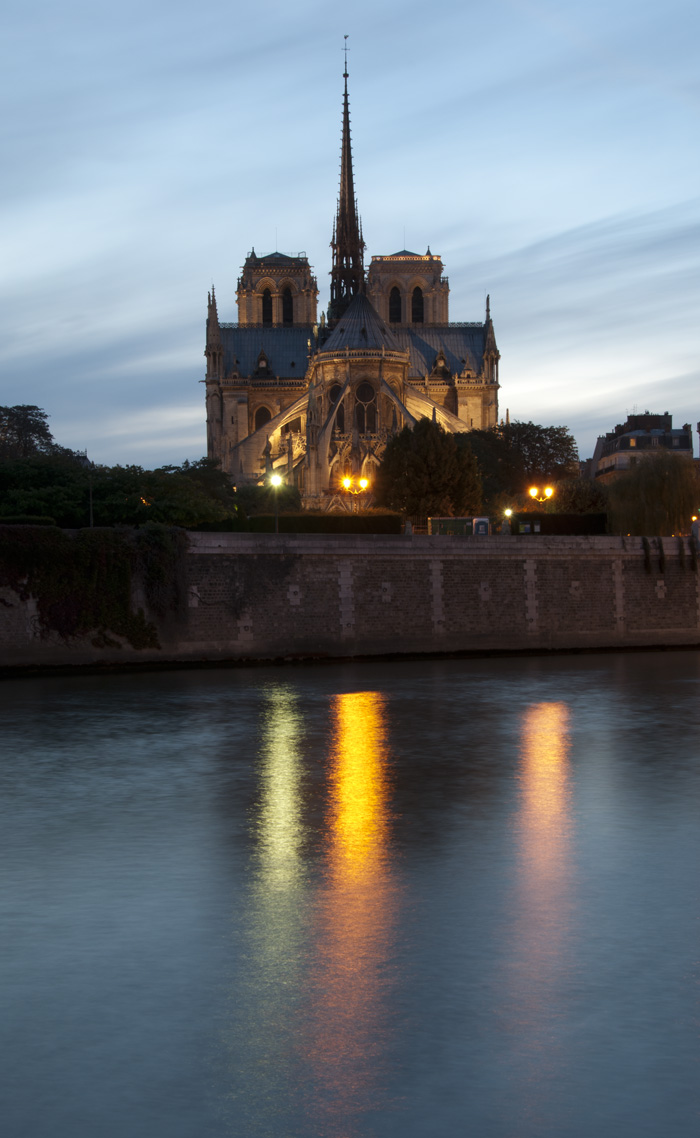
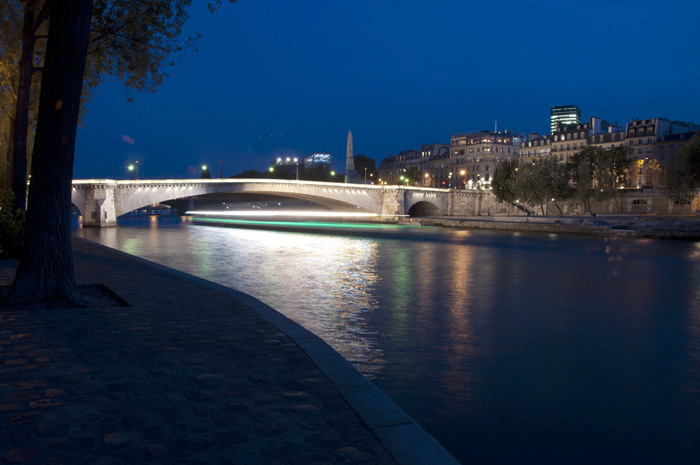
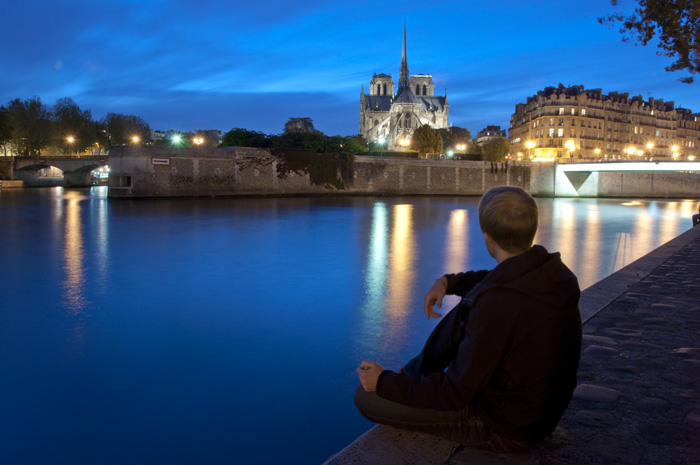
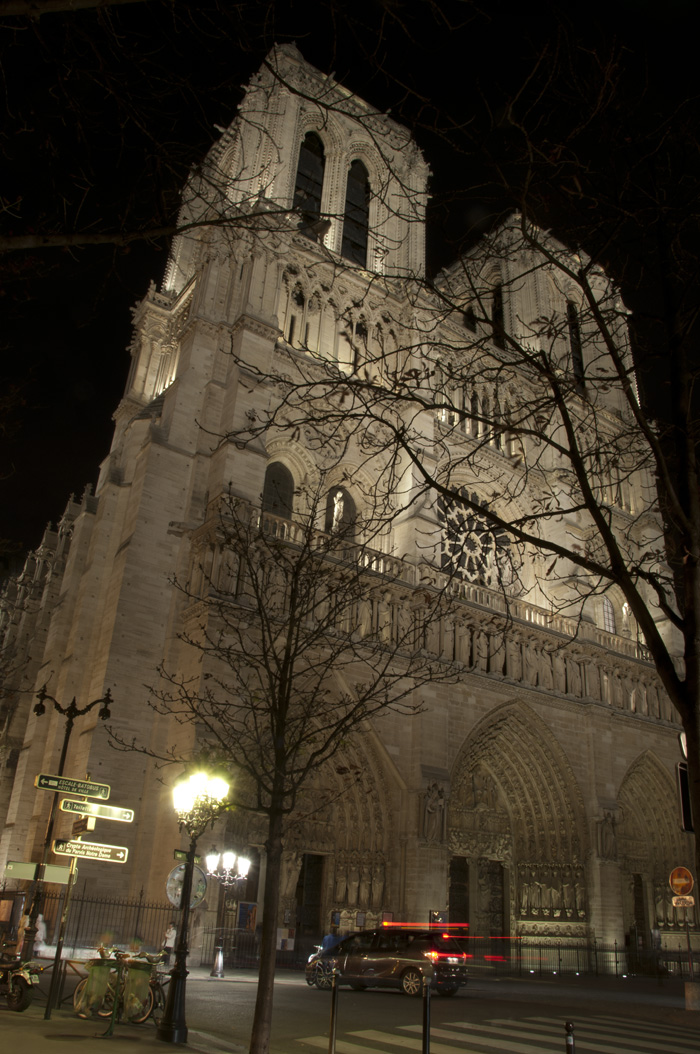
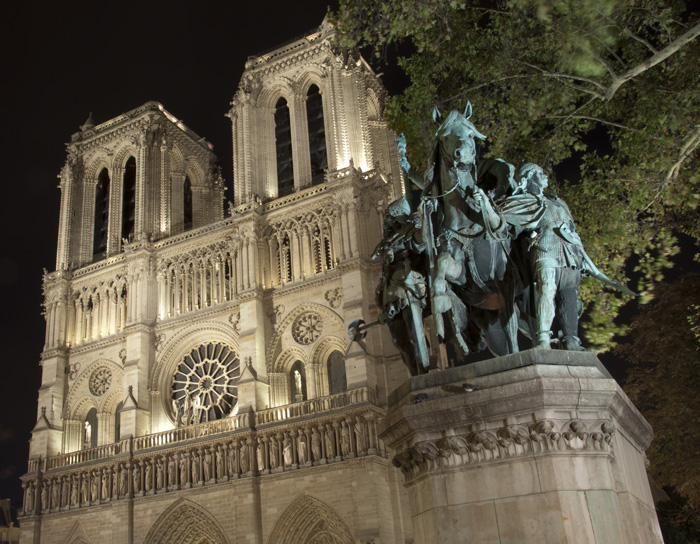

Paris by Night: Place de la Concorde
Located in the 8th arrondissement to the north of the Seine, Place de la Concorde is one of the most famous public squares in Paris. Built in 1755 as Place de Louis XV, it was later incorporated by Georges-Eugene Haussmann in the late 19th century as a pivot in a grand avenue that connects Arc d’Triomphe and Champs d’Élysées to the west and Tuileries Garden and The Louvre to the east.
After the French Revolution in 1789, the statue of Louis XV (where the obelisk currently stands) was replaced with a guillotine and many notable members in French history—including Louis XVI and Marie Antoinette—were relieved of their heads. The execution device was finally removed in 1795, perhaps driven by the unbearable stench and an overly dull blade—over 1,300 people were beheaded in a single month during the peak of activity the prior year.
The 3,300-year-old Egyptian obelisk standing in the center once graced the entrance to the Luxor temple. It was one of two gifted to France by Egypt in the mid 19th century; the other proved too difficult to move and remained in Egypt.
After photographing the Eiffel Tower from the nearby banks of the Seine, I set up my tripod to capture this ancient obelisk with the temporary ferris wheel as a backdrop. The moon was a nice, gleaming white cherry on top.
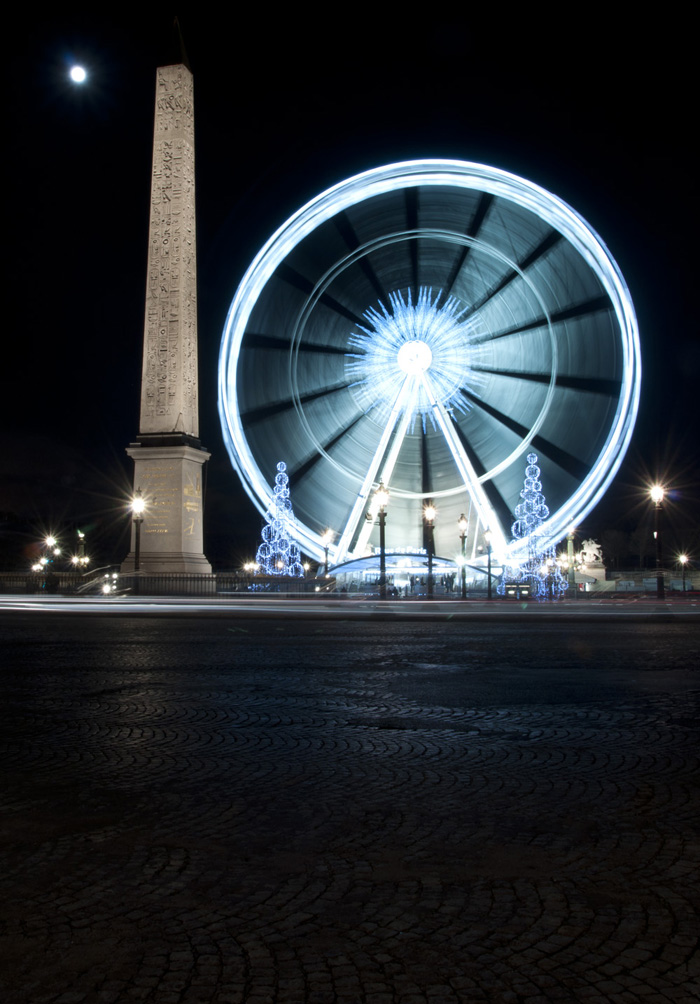

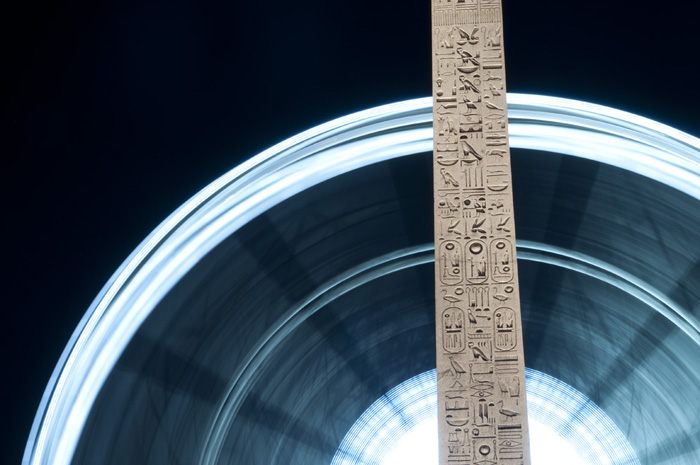
Resources:
Paris by Night: Eiffel Tower
I peered outside our apartment window and saw a thick cluster of clouds smothering a blue sky.
Today could be the day.
I recently decided that it was morally deplorable to live in Paris for six months and not have a picture of the Eiffel Tower at sunset. At 3:30pm, I packed up my camera and tripod and headed for the Trocadero metro stop. Located on the other side of the Seine, this location features two imposing buildings that form the sites on top of an old rifle, perfectly framing the Eiffel Tower at the end of the barrel.
I was set up by 4:20pm. Unfortunately, the anticipated sunset colors never materialized, but despite that and freezing temperatures, it was still worth my time.
The Eiffel Tower is arguably the most iconic landmark in the world and, surprisingly, it was widely derided after it was built for the 1889 Exposition Universelle. The Eiffel Tower was to be dismantled in the early 20th century but a radio antenna installed by its designer Gustav Eiffel in 1909 proved too valuable to the French Army. Two and a half million rivets hold together the “iron asparagus.”
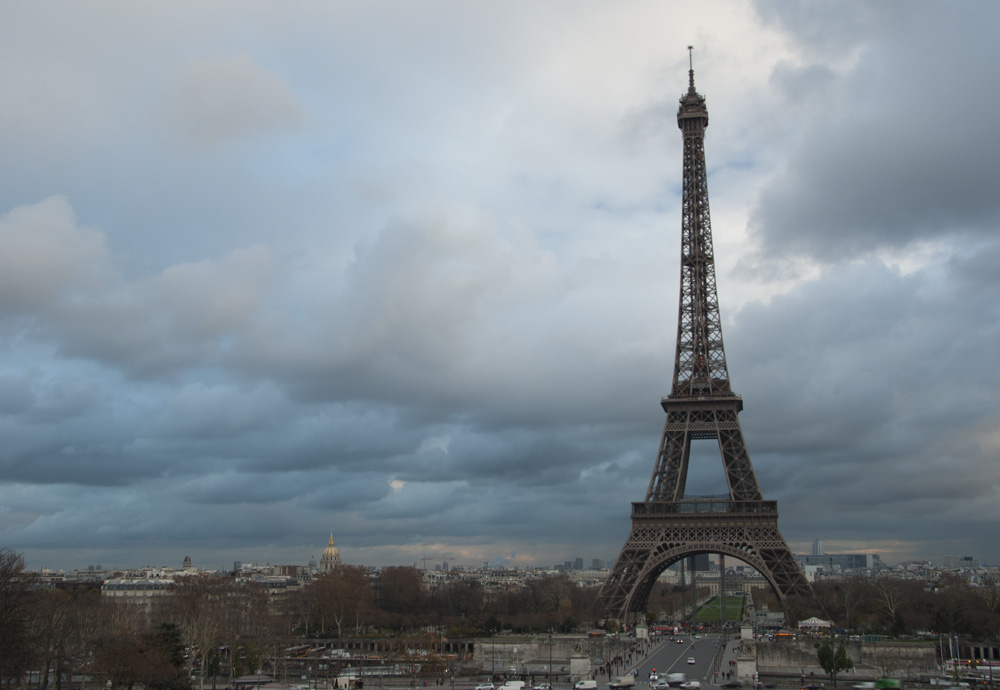
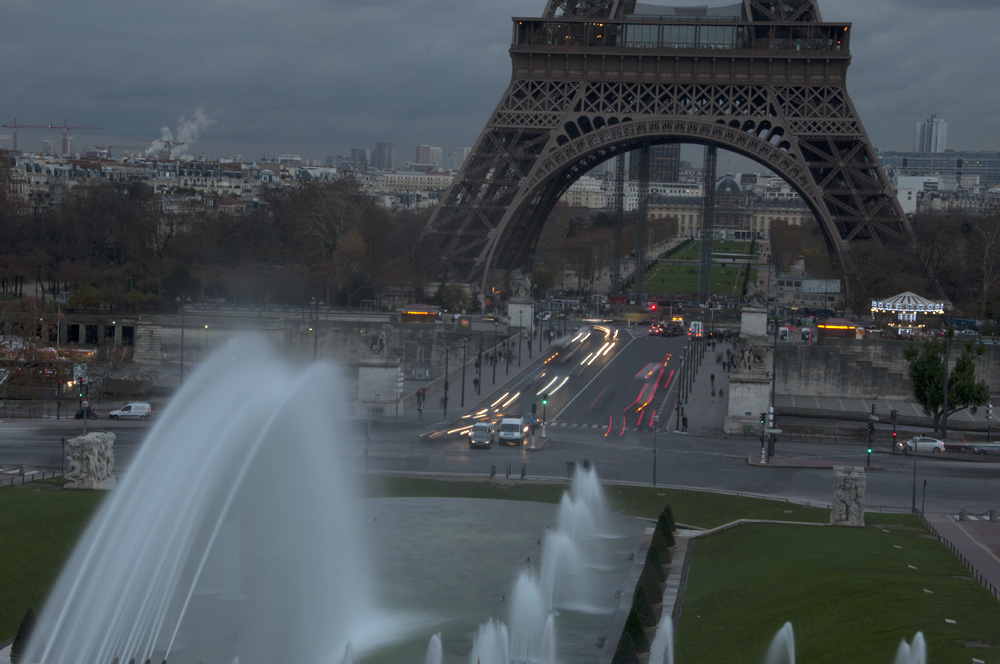
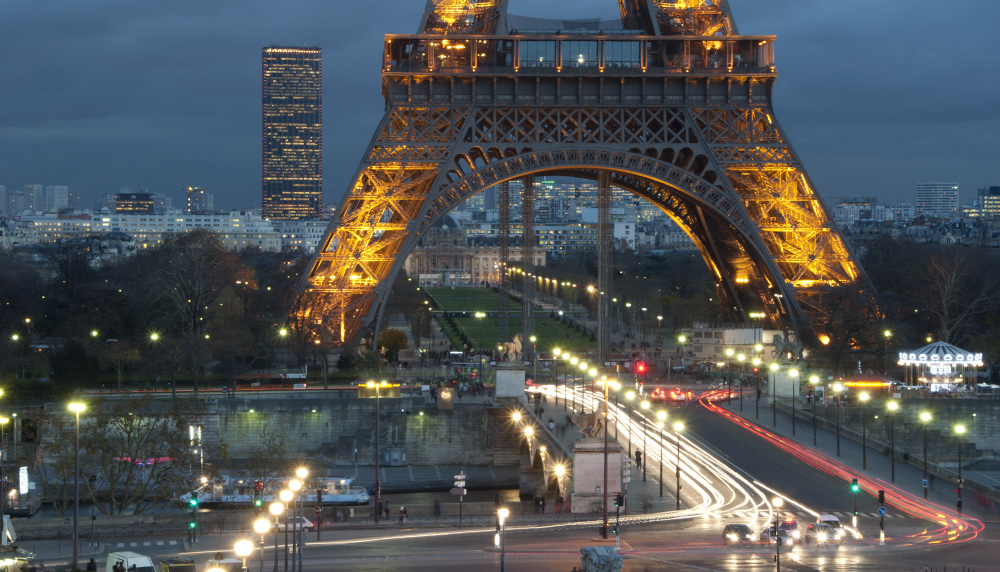


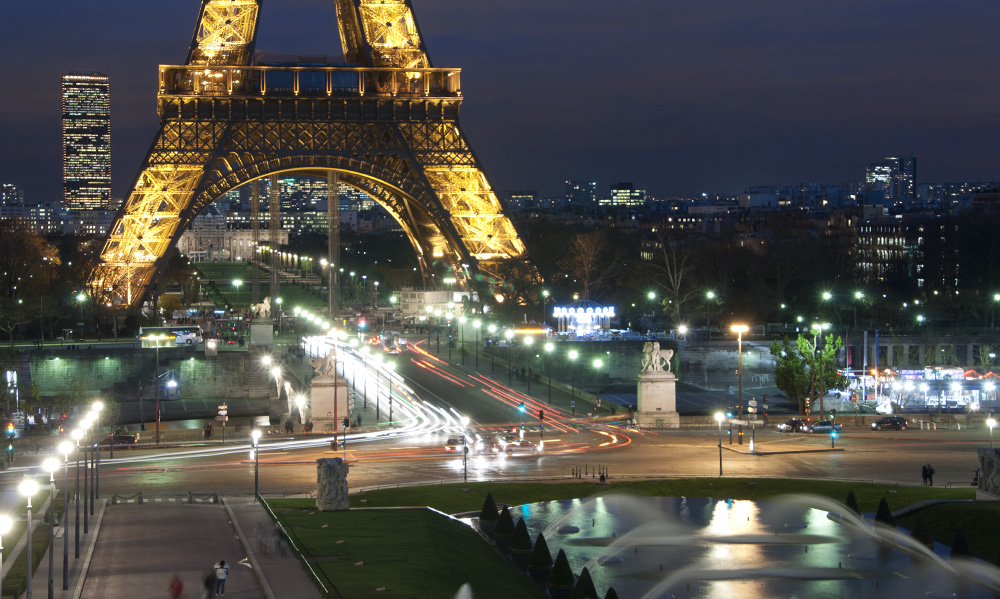
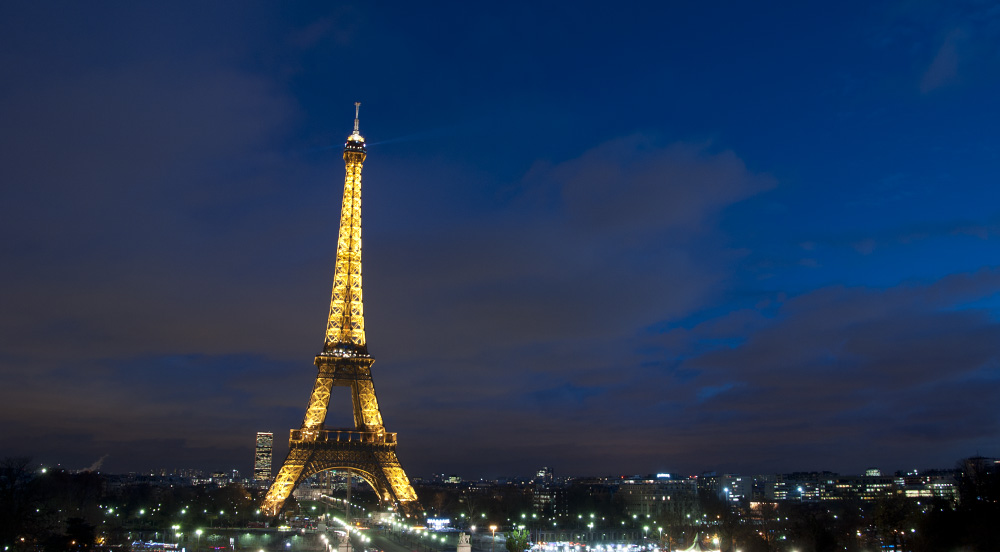
Unfortunately, my battery died and I had forgotten my spare at home. Fortunately, I already had plans to meet Kristi at l’Opera. I walked from Trocadero to Opera, received my charged battery, and moved quickly to Place de la Concorde on the Seine. I was only able to snap a couple of photos of the Eiffel Tower during its hourly light show—consisting of hundreds of pulsating flashbulbs—before it returned to its normal nocturnal state.
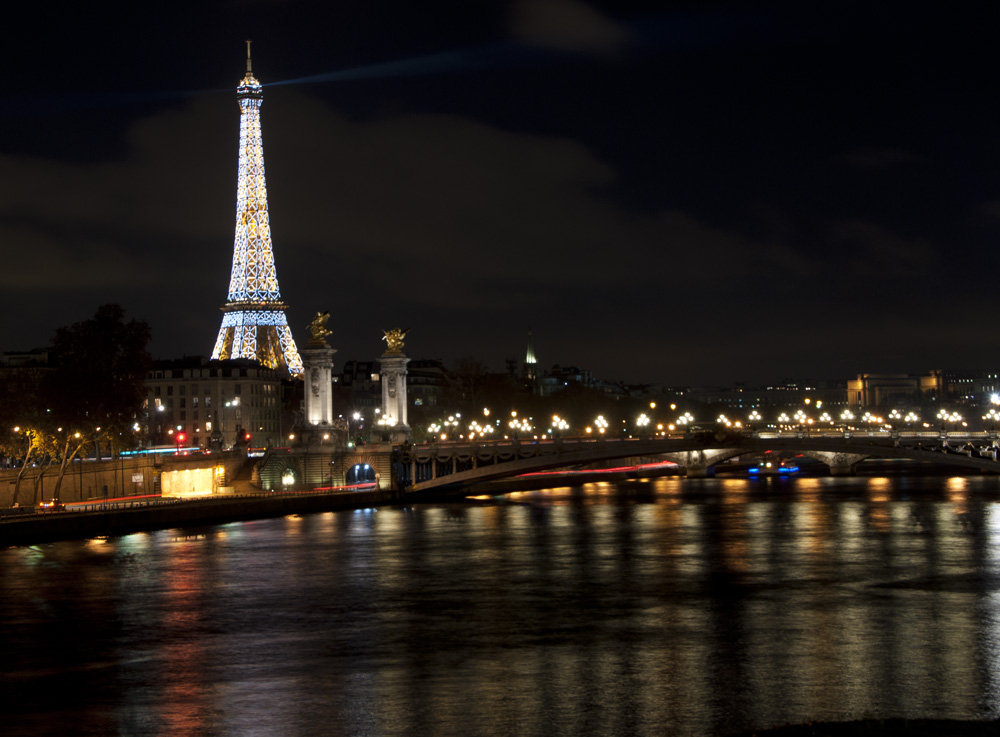

Turning the camera directly across the Seine, I captured a photo of Assemblée Nationale with Pont de la Concorde to the left. I especially love how the tree shadow projects over the river.
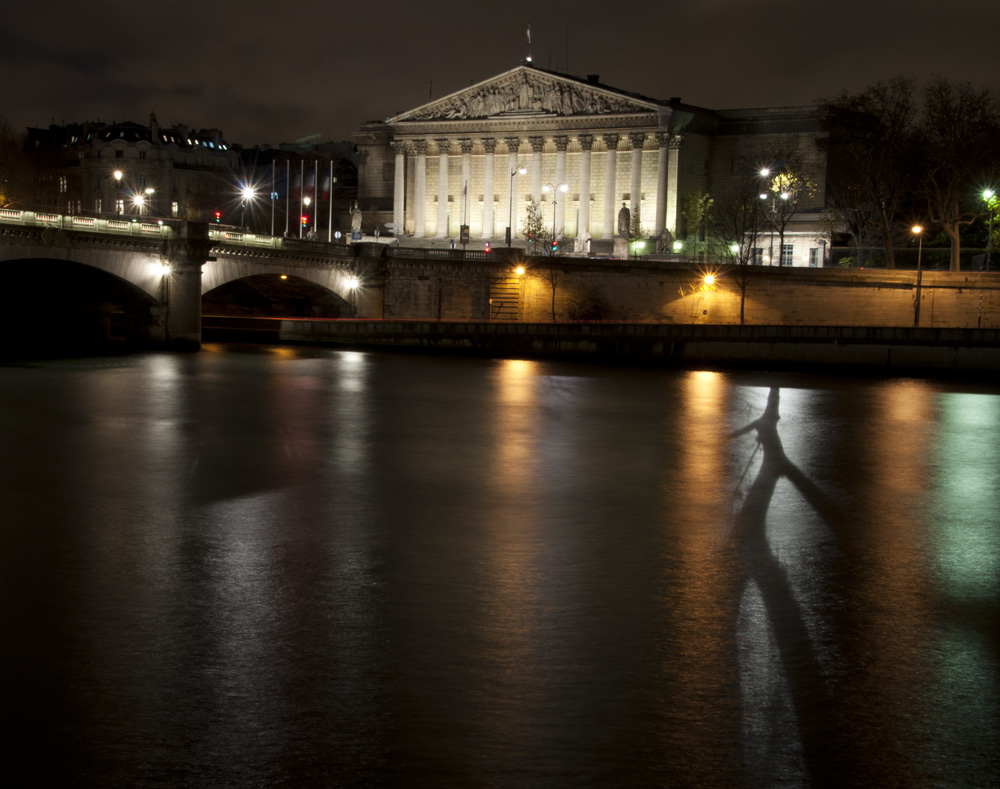
Resources:
Sh-t that wouldn’t fly back home: Paris edition
Tasting unfamiliar foods, taking wild forms of transportation, or immersing yourself in an incomprehensible language are the types of experiences that drive most to travel. Some are locked away in travel journals, others are fodder at cocktail parties, but it’s those rare experiences that challenge a persons fervent beliefs of what’s right, what’s wrong, what’s normal, and what’s just plain weird.
Like sweet mayonnaise and canned corn on pizza (Japan); like a young teenager using his finger to plug the barrel of his aging Kalashnikov assault rifle as he boards your bus (Laos); like hearing someone loudly clear their throat on an airplane, and expel the contents on the carpeted floor (China). I like to categorize such experiences as “sh*t that wouldn’t fly back home.” While they can be mystifying, or even infuriating, at moment of exposure, I’d argue that they keep the soles of our walking shoes thin and our frequent flier portfolios plump.
Here’s my first installment: Shit That Wouldn’t Fly Back Home – Paris Edition. Neither wrong, nor right—just different.
Parking
As with most densely populated metropolises, parking in Paris is at a premium. Subterranean garages exist largely for day-tripping tourists, so if residents don’t want to pay $350 a month to park the cars, they need to duke it out on the streets to find a rare vacant piece of curbside real estate. And some are forced to get creative. A Smart Car, one of the smallest vehicles on the road, can wedge its sub-nine foot chassis nearly anywhere. But what if the parking spot is even smaller than that? How about backing your car up perpendicularly to the curb and gunning it?
Sidewalks are saved from parked cars through ample use of metal pillars, which are spaced close enough to both each other and the curb to dissuade even the smallest vehicles from blocking the pedestrian thoroughfare. But this “out-of-the-box” thinker found a solution: just park on the actual sidewalk.
On a recent walk near the Eiffel Tower, I watched a new Audi park at the apex of a corner, throw on his emergency flashers, get out to admire the fact that he was effectively obstructing both crosswalks, and tucked into a local café for dinner. These brazen infarctions are startling for a Seattleite who received a $75 ticket when six inches of his bumper was hanging over a yellow curb (thank you City of Bellevue).
Dog Sh*t on Street
I’ve explored this topic in another post ad naseum (literally, I almost threw up) but this ranks high in the “shit that wouldn’t fly back home.” I am well aware that plenty of dog excrement isn’t picked up in the U.S. but few owners would have the audacity to encourage it in broad daylight, on a sidewalk, in the direct line of sight—and smell—of numerous passerby. Fines for such infarctions may be relatively light in the U.S., but public scorn is strong enough to keep such activities in dark alleys and secluded parks.
The speed with which cars approach pedestrian crosswalks
Rules for pedestrians across the planet are generally the same: wait for the little red guy on the other side to turn green. Seems simple right? Well, wait until you are in the middle of a crosswalk and a car approaches your side at 80 miles an hour. The confidence that you are in the right-of-way will crack as quickly as your fibula when it meets the bumper of a Renault. French drivers don’t appear to be crazy, but place an occupied crosswalk in front of one and they suddenly turn into Michael Schumaker approaching his pit crew. The driver, of course, will stop but not until it is very clear to all parties that he or she decided to spare your life. To save face, reduce the size of your eyes, complete your crossing, and go find a clean pair of underwear.
Dogs, Cigarette Smoke, and $75 steaks
Fortunately for the few people who don’t regularly suck cigarettes in Paris, smoking isn’t allowed inside restaurants. Outside spaces, however, are free game, even if said space is the enclosed atrium of a five star hotel. Pardon my stubbornness, but if I purchased a $75 steak prepared by a culinary artist, it’s hard for my taste buds to appreciate the harmony of ground pepper and cumin when my nose is battling the Marlboro to my left, and Virginia Slim to my right. If any smoke is to be obscuring the view of my meal, especially an expensive one, it better be hickory.
But the dog sitting in the chair next to me, he can stay. Assuming he doesn’t growl and snip at anyone that passes the table, like the little shi-tzu (pun intended) pictured below.
Visa paperworks, a gluestick, and 738 euros in stamps
The long and arduous process to obtain French work visas is worthy of its own post (perhaps its own blog) but one step struck me as particularly absurd.
Kristi was instructed by her office to go buy stamps. Not postage stamps mind, but “fiscal stamps.” The reason for purchase was unclear, but she was given instructions to buy them from a Tabac, a bar that sells cigarettes (our local tabac also functions as a off-track betting facility to equally serve all vices). Handing over 738 euros, Kristi received a small stack of stamps of varying denominations, held together with a paper clip. I’ve never been so underwhelmed with what $1000 can buy you.
Fast forward a week until we were seated in front of a French bureaucrat, one meeting away from finally receiving our cartes sejours (French ID cards) and the freedom of being able to come and go from France as we pleased (our tourist visas were about to expire). When prompted, we handed over our stamps. He flipped over a piece of paper and took out an Elmer’s glue stick—the first I’d seen since the 1st grade. With a heavy hand, he applied three vertical lines of glue and neatly placed each stamp one over the other. It took several minutes for him to create a grid with all eighteen stamps before my incredulous eyes. Once they were all neatly in place, he took his large and shiny date stamper and cancelled each stamp. The definitive, rhythmic sound … ka-chunk ka-chunk … must be auditory porn to a bureaucrat.
In the day when technology allows you to deposit a check with your phone, it’s mystifying that any payment process, let alone one as important as a visa approval process, would still require a mediocre adhesive.
Closing business for entire month
Most Parisian shops are closed in August, some for a week or two, others for the whole month. An entrepreneurial mind would realize the opportunity to stay open and steal customers from their closed competitors but this urge is either suppressed or overridden by the healthy need for time off. If you need anything from a small neighborhood store better get it in July or you’ll have to wait until September. Most Parisians take vacation during this month as well, which may or may not be related to the fact that their local bakery is closed for several weeks (Lonely Planet states that 80% of Parisians eat bread three times a day).
Requiring three months notice to fire someone
I am not experienced in any sort of labor law (let alone French) but it is commonly understood that holders of certain work permits, especially civil servants, are impossible to fire. If your employer is somehow able to circumnavigate the quagmire that is Human Relations, they can give you no less than three months notice. While three months notice is certainly more humane than making an employee pack a box on the spot and be escorted out by security, I can’t imagine that said employee would be terribly effective at their job; the term “dead man walking” comes to mind. Similarly, if an employee wants to quit, they must give three months notice, six times the standard two weeks given in the states.
Getting hit on by your doctor
The penultimate step in our visa process was a perfunctory medical checkup. The efficient process took place in a corridor lined with doors. Chairs down the middle allowed applicants to wait, facing out, for their names to be called. Kristi got called up first and, because the chairs were only a couple feet away from the doors, I could hear most of her conversation with the middle-aged, male doctor.
“Wow, you are very beautiful. Why did you come to France?”
“My company moved my husband and me to Paris.”
“You are married? Oh, that’s too bad…”
His tone conveyed true disappointment, but neither her marital status, nor the fact that her husband was sitting within earshot, dissuaded him from continuing to flatter my wife. After a few minutes, their time was brought to a close and he was legally obligated to call my name. For some reason, he didn’t display half of the warmth during our interaction, but thankfully he didn’t refuse to stamp my paperwork or subject me to invasive tests out of disdain. He was a sweet soft-spoken man so the situation was more comical than anything, but I couldn’t help but think which of his statements to Kristi would be more indemnifying in front of a North American review board.
Moving your dinner table to sit down at a restaurant
Space is at a premium in Paris and fashionable eateries can be as tightly packed as a box of madelines. If a North American approaches a packed café, they may be dissuaded by the possible lengthy wait. But if you are a small party of two, you may be surprised at how quickly you’re waved forward: just expect to move some furniture. When we visited the popular Entrecote restaurant (which serves all you can eat steak and fries), the maître d simply gestured us to our table, as depicted by the illustration below, and walked away.
It was physically impossible for anyone to sit down on the other side of the table, save a Russian gymnast or the little Chinese guy from Oceans 11. Used to this now, Kristi and I moved the chair and the small table into the narrow aisle, moving it back once Kristi was seated. American eateries need to have aisles of a width mandated by the ADA and no one ever expects to move more than a chair, and in nice restaurants those are moved for you.
No stars at Thai restaurant
French people don’t like spicy food. Our first indication should have been when the waitress made no mention of stars when taking our order at a well-regarded Thai restaurant in Paris. Asking for sauce piquant (spicy sauce) at our local Korean restaurant yielded a small dish of garlic-infused ketchup. Unfortunately, the bill is the only thing that makes my brow sweat when visiting any Asian restaurants in Paris.
Resources
- http://en.wikipedia.org/wiki/Smart_Fortwo
- http://www.parkingsdeparis.com/EN/reservation-car-parking-space-parking-Pyramides.html
- http://www.csmonitor.com/2005/0727/p17s01-lifo.html
- http://www.expatica.com/fr/essentials_moving_to/country_facts/Public-holidays-in-France-2012_15286.html
A Beer-watchers Field Guide to Belgian Brews
When presented with a four-day weekend, my wife and I made the decision to travel through Belgium–a short train ride from Paris. The cool-gray architecture and graffiti of Brussels had grabbed our attention on a train trip from Amsterdam several months prior. We selected three cities to visit—Brugge, Antwerp, and Brussels—and looked for a theme to tie the three popular tourist destinations. Whether from the French South or Flemish North, the Belgians are known for their beer, chocolate, and fries. Fearing the effects of continuous blood sugar spikes over four days, we quickly decided to avoid a chocolate tour of Belgium. And who wants to eat just fries?
Beer it was, and successful we were. We tallied a total of 34 different Belgian beers over four days—from sour ales, to native IPA’s, to seven Trappist monastery brews. We even had time for some fries and a chocolate or four.
We’ve assembled a beer-watchers field guide to help readers find their own Belgian suds: including measurements for each beer; a description of where that beer naturally occurs; tips to help users identify the beer, in bottle or glass, in the field; and notes on what they should expect when their quarry reaches the lips.
I should warn readers that, like the $8 million nose of Dutch wine-maker Ilja Gort, my taste buds are insured by Lloyd’s of London, albeit for a slightly smaller amount: $3.70 (coincidentally the cost of postage to mail my policy). Consequently, readers should take our tasting notes with a pinch of hops and, if more informed descriptions are required, readers should scan the comments at www.beeradvocate.com.
Many terms used in our field guide will be familiar to birdwatchers, but the content will hopefully be of interest to a wider population (although I read in the 2010 census that “beer drinking bird nerds” are a growing demographic). Here’s a glossary to help bridge the gap.
- Abundant: widely available for purchase at a variety of venues, from trains to corner stores.
- Common: likely to be encountered at least once on a long night out in an urban center.
- Uncommon: findable in areas with a high density of beer drinkers, though may provide a challenge.
- Rare: exists but will require specialized knowledge to find.
- Accidental: confirmed sightings may be sporadic, finding requires considerable luck and skill.
Family Aledae (Ales)
A diverse family of beers, the ales vary in color from golden yellow to charcoal brown, and even one with pinkish plumage. These species represent a variety of tastes. For the purpose of identification in glass, these species have been arranged in order of coloration, light to dark.
Family Trappidae (Trappist)
Family Dubbelae (Belgian Dubbel)
Typified by somewhat strong, brown beers with a note of fruitiness, this family of beer was split by taxonomists from the Trappidae family as the population grew beyond the Trappist monasteries after World War II. “Abbey” or “Abbey-style” are helpful identification marks for this family in the field.
Family Tripelidae (Belgian Tripel)
A family of strong pale ales that have a common ancestor: Westmalle Trappist. Some taxonomists still lump species like Westmalle Tripel and St Bernardus Tripel with the Trappidae Family, as they’ve been done in this guide. Their more secular counterparts—which have proliferated throughout Belgium since World War II—are introduced below, from light to dark. Look for “Abbey” or “Abbey-style” in the field.
Exotic/Introduced Species
Beerwatching Hotspots in Belgium
Fringe Hobby Spotlight: Plane Spotting
I’m a birdwatcher. I get out of a perfectly good bed well before normal people. I drive long distances to visit locations as inviting as sewage treatment plants. I seek birds that are a range of sizes (most often small) and a flurry of colors (most often brown). Set my iPod to shuffle and you’ll find songs by Tool and Jurassic 5 intermixed with short interludes by Clay-colored Sparrow and Virginia Rail.
As a birdwatcher, I am intrigued by other hobbies that are a little off of center. On a train trip to London for the Olympics, my friend Mike and I sat with a gentleman from Quebec who collected Olympic postmarks. Not just stamps mind, nor Olympic stamps, but the circular cancelation stamps post office employees place over postage stamps. He showed us a binder—one of twenty-four in his collection—bulging with envelopes and postcards with postmarks for every Olympic competition since 1896.
On a weekend trip to Zurich Switzerland in late October, I met a gentleman who was well respected amongst followers of another esoteric hobby: plane-spotting.
I first learned of plane spotters several years ago; how they positioned their long lensed cameras near airports to capture images of commercial airliners of different makes, models, and carriers.
I periodically thought of my fellow peripheral hobbyists whenever I watched an airplane fly overhead. While I’ve trained myself to identify the subtle differences in flight profiles of Sharp-shinned and Cooper’s Hawks, I couldn’t tell you what separates a Boeing 747 from the equivalent Airbus though I know it must be obvious to the trained eye. The parallels with my beloved hobby birdwatching, including similar tools and techniques, nonetheless intrigue me.
[Editor’s Note: Adam promises to all his friends and family to not pursue another hobby that will alienate him even further from mainstream society.]
None of this was on my mind when I stumbled across Buch Air Center, a model plane store across the street from our hotel near the Zurich airport. I was drawn through the doors because I had never seen anything like it: hundreds if not thousands of model planes of different makes, models, carriers, and sizes. A pocket-sized Thai Air Boeing 737 to a four-foot long Airbus A340 donning the Swiss Air logo.
I asked the nice Swiss store owner behind the counter who’d collect such models. Some people only collect models of a certain size, he said, while some collect every make and model flown by a specific carrier. Some people just want a personal memento, for example the exact plane a couple flew on their honeymoon. Model companies are mostly British and German with some emerging from China, where he estimated 98.5% of the models are already manufactured. Carriers, like Lufthansa and Singapore Airlines, will allow companies to use their logo if they are able to give one to each of their employees for free.
I asked if he had many customers who were plane spotters. “Of course!” he responded, “I am one as well.”
This was a rare opportunity to better understand what drives the plane spotter so I identified myself as a fellow fringe hobbyist and proceeded to ask a bunch of questions. It turns out plane-spotting and birdwatching are quite similar.
Spot planes, helicopters, gliders, balloons …
No two birdwatchers are the same: some prefer scoping open water for birds while others specialize in birding by ear. Some only keep a list of birds they’ve seen in their backyard while others fly to each corner of the continent to build their “ABA list” (the American Birding Association list for continental United States and Canada). In plane spotting, some enthusiasts chase only commercial airliners, while others prefer military aircraft. A smaller and more … umm, enthusiastic subset chase any manmade object in the sky, including helicopters and business aircraft as well as gliders, drones, and even hot-air balloons. It is believed that plane spotting started in England and, like birding, the British have a reputation for producing the most manic participants.
Plane spotters keep life-lists
Armed with digital cameras and telephoto lenses, plane spotters grow their life-lists by successfully capturing images of their quarry, whether it be World War I German aircraft, or every make and model flown by a specific carrier. To an even greater extreme, some plane spotters collect images of every plane flown by a carrier (identified by unique serial numbers on their fuselage). The Swiss gentlemen with whom I spoke hadn’t tallied his list recently, but he estimated to have images for around 35,000 different commercial, military, and business aircraft in his collection.
Plane spotters employ similar strategies to birdwatchers
Every spring, birdwatchers flock to birdwatching hotspots like the Texas coast and the Florida Keys to tally scores of songbird species as they are migrating north from their tropical wintering grounds. These coastal areas are the first opportunities for birds to land after long flights over the Caribbean, thus serving as bottlenecks for dense flocks of birds you’d otherwise have to travel great distances to see. For example, a fortuitous bush could host both a Swainson’s Warbler and a Blackpoll Warbler, two species that, to see just weeks later, would require travel between the floodplains of southeastern United States and the boreal forests of Canada, respectively.
Similarly, plane spotters make efficient use of bottlenecks in the distribution of planes. Large airports that serve as hubs for multiple international carriers are effective targets as well as production facilities where planes can be “captured” as they come off the assembly line before they are delivered to more distance locations like Germany and Singapore. This Swiss gentleman had just returned from a trip to the Seattle where he visited Sea-Tac, Boeing Field in south Seattle, the Boeing production facility in Renton, and Payne Field in Everett.
Plane spotters have specialized field guides
No self-respecting birder goes in to the field without their trusty field guide, whether it be Sibley, Audubon, National Geographic, Peterson, Kauffman, or any combination thereof. Claudio Müller’s Airplanes of the World is an illustrated publication that provides short profiles on over 150 types of planes, including illustrations of its profile from above, side, and head-on. It is published annually to include all the most recent models, but with each addition, an older model is dropped, thus requiring a multiple volumes if a comprehensive reference is desired.
Plane spotters go on field trips
Every year, the World Economic Forum is held in Zurich and financial leaders arrive from all over the world to attend. This summer, the local chapter of plane spotters requested permission to access the tarmac where the planes were parked. Far from a small event, buses were used to transport well over a thousand international plane spotters to and from the airfield.
A recent field trip that made waves in the international plane-spotting community was a chartered flight into Pyongyang North Korea. Different from birdwatching, they are no professional guiding companies. Plane-spotting field trips are typically organized by individual hobbyists (perhaps inspired with the incentive of having their expenses covered by the group). Need help organizing a trip? You can purchase up-to-date catalogs of aircraft manufacturers, including detailed information on models names and serial numbers.
Our conversation was broken by the sound of the door opening. A gentleman with a spectacularly curled moustache entered the store and the two made a quick friendly exchange in German. A friend from a nearby plane-spotting chapter, the owner confided.
After monopolizing the storeowner’s time for nearly thirty minutes, I was happy to purchase the 2012 airplane field guide in my hand, even though it was in German. He threw in a small desktop calendar of commercial airliners for free.
Provided with free time, I’ll still opt to visit a verdant wetland over, say, Payne Field, unless the grassy perimeter holds a Sprague’s Pipit.
But I may learn the flight profiles of a few jetliners … and maybe a jet or two. Just a couple.
Hunting Godwits and Oystercatchers
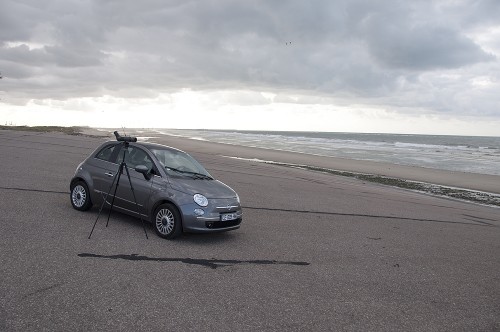
I am not sure if the seas were angry, but they certainly weren’t pleased about me setting up my spotting scope. My optics were pleading not to be led from the warm rental car to the fierce winds and sputters of driving rain outside.
I was in my last hours of my much-anticipated day of bird-watching in northern France. I had awoken in Paris before dawn to drive my rental Fiat 500 two hours north to the famous Parc Marquenterre, where flocks of migrating shorebirds awaited.
After careful research, I’d decided to spend the rest of the day looking out over the ocean towards the British Isles in hopes of spotting a passing murre, eider, or shearwater. My original plan was to check out several locations along the coast before pointing the car inland to Lille—on the Belgian borer—where I would rendezvous with Kristi to spend the weekend.
I glanced at my watch. As always, my original plan was ambitious. I really only had time for one stop. I decided to head straight for coastal city of Dunkerque, tempted by the pair of drivable breakwaters that jet out into the water I’d seen on Google Maps.
Without GPS, I was forced to use a less-detailed paper map and the position of the sun, which was fortunately prominent in the sky. After a few missed turns and multiple trips to the same roundabout, I found the jetty and unfortunately a seawatchers worst adversary: wind. While not as bad as its nefarious cousin, heavy rainfall, hard wind makes it difficult to hold a spotting scope steady, rendering impossible the already difficult task of identifying dark winged dots on the horizon.
I scanned the beach and the turbulent waters beyond from the comfort of the rental car. Fortunately, positioning the car was easy: the cement jetty was almost entirely drivable, save the last precipitous pitch as it met the beach.
Unfortunately, I couldn’t find much. I drove down to several more locations on the jetty: nothing.
As I approached a small group of empty cars, I was startled to see a man, perched on top of coastal boulders with a shotgun resting on his shoulder. Quite different from the beach tools I am used to seeing, the most insidious being a shovel or clam rake.

There’s no way he could get a decent shot at a seaduck. Was it target practice? His similarly-armed friend approached with a limp gray body dangling from his left hand. Still at a distance, I had to use my binoculars to identify their quarry: Black-tailed Godwit, a large sandpiper.
I was shocked. Certainly they can’t hunt shorebirds in France, can they? It did explain the lack of birds on this beach. Seeing similar clusters of cars down the jetty confirmed that the sport was at least popular, if not also legal.
I drove further down the jetty and stopped just short of vividly patterned flock of black and white Eurasian Oystercatchers. I quickly brought my binoculars to my eyes, excited to study a species I hadn’t ever seen before that morning. Hmph. Hunting decoys. A man paced the waterline near the decoys, shotgun on one side, dog on the other.
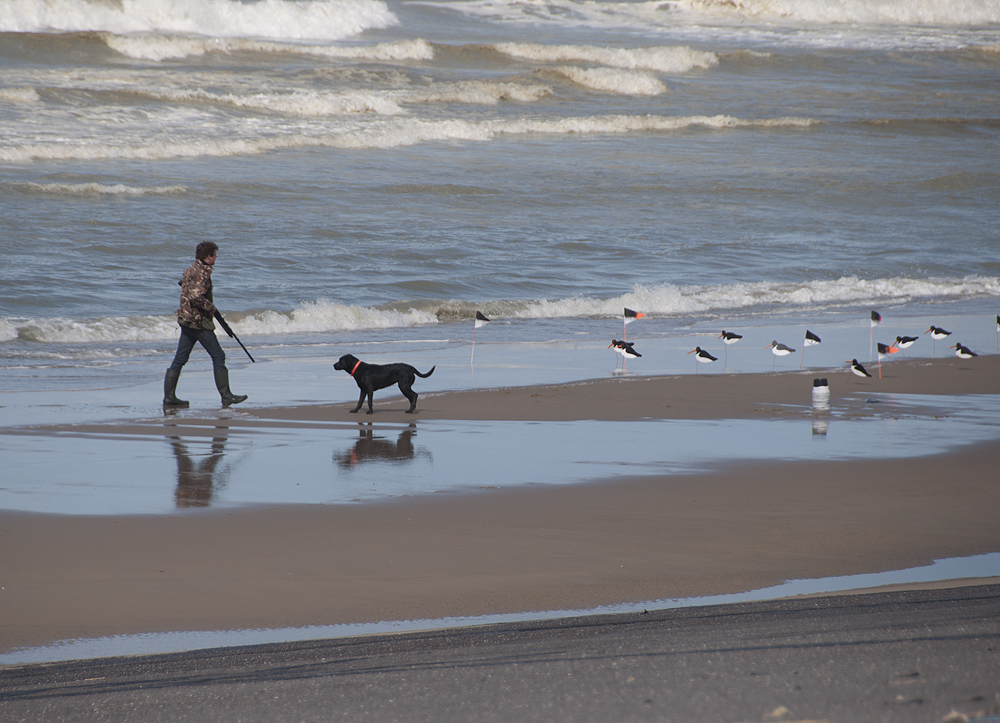
Tactically, the location was perfect. This wide amalgam of sand, cement, and rocks was the first land migrating shorebirds would see after leaving the tip of Scandinavia 500 miles to the north.
In the United States, we are used to hunting waterfowl and gamebirds like quail and pheasant; all other species are protected by the International Migratory Bird Treaty. It was a surprise to see some of the longest distance avian migrants in the crosshairs.

Despite a more generous target list, hunting is tightly regulated in France. Every hunter must have a valid license. Applicants must pass a written exam to test their knowledge of wildlife, hunting, hunting regulations, arms and munitions, and firearm safety. After passing, the applicant must take a practical exam which involves simulated hunting (with blanks) as well as live target practice with black targets representing legally hunted wildlife and red targets representing protected species. In addition to failing the above tests, applicants can be denied for medical reasons, or by having a criminal record within the past five years.
Once they pass, they can join the hunting community in France, which is well over a million strong. Following hunting seasons set by local prefectures, people can hunt any of the 62 bird species below.
| Waterfowl | ||
| Greater White-fronted Goose Graylag Goose Canada Goose Gadwall Eurasian Wigeon Mallard |
Northern Shoveler Northern Pintail Garganey Red-crested Pochard Common Pochard Tufted Duck |
Greater Scaup Common Eider White-winged Scoter Black Scoter Long-tailed Duck Common Goldeneye |
| Gallinaceous (“Chicken-like”) Birds | ||
| California Quail Northern Bobwhite Rock Partridge Red-legged Partridge Gray Partridge Common Quail |
Silver Pheasant Reeves’s Pheasant Ring-necked Pheasant Eurasian Capercaillie Black Grouse Hazel Grouse |
Willow Ptarmigan Rock Ptarmigan |
| Rails | ||
| Water Rail Eurasian Moorhen Eurasian Coot |
||
| Shorebirds | ||
| Northern Lapwing Black-bellied Plover European Golden-Plover Eurasian Oystercatcher Spotted Redshank Common Greenshank |
Common Redshank Whimbrel Eurasian Curlew Black-tailed Godwit Bar-tailed Godwit Red Knot |
Ruff Jack Snipe Common Snipe Eurasian Woodcock |
| Pigeons/Doves | ||
| Rock Pigeon Stock Dove Common Wood-Pigeon European Turtle-Dove Eurasian Collared-Dove |
||
| Corvids | ||
| Eurasian Jay Eurasian Magpie Eurasian Jackdaw Rook Carrion Crow |
||
| Songbirds | ||
| Sky Lark Eurasian Blackbird Fieldfare Redwing Mistle Thrush European Starling |
||
Sources:
- http://www.chasses-du-monde.com/europe/especes-chassees/index.html
- http://riviera.angloinfo.com/information/lifestyle/sports-and-leisure/hunting

